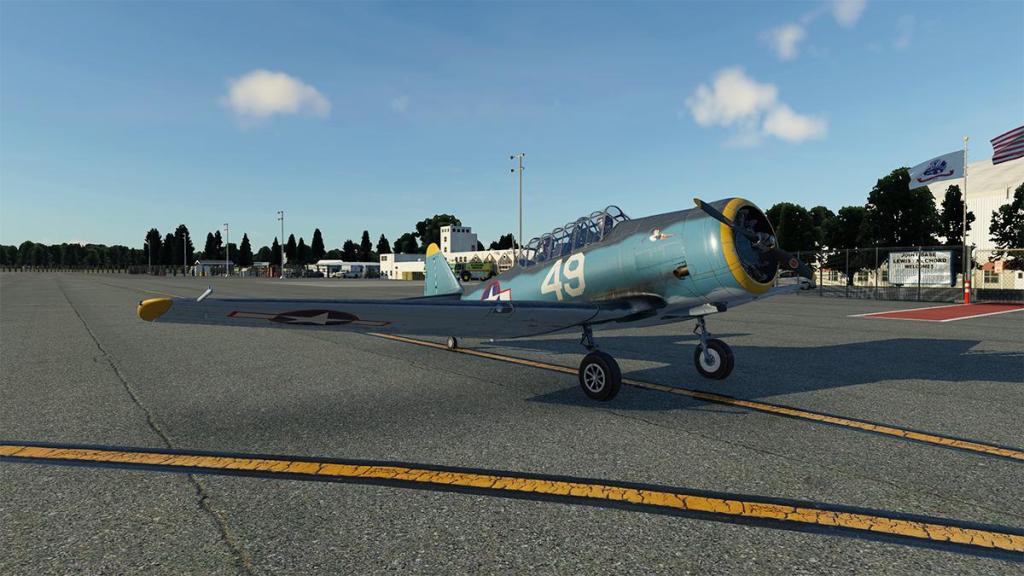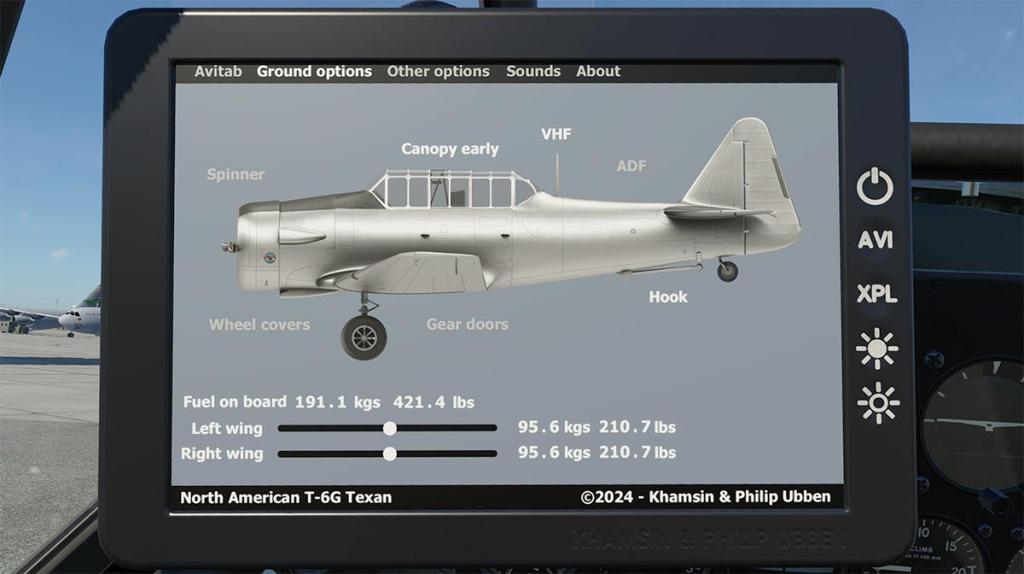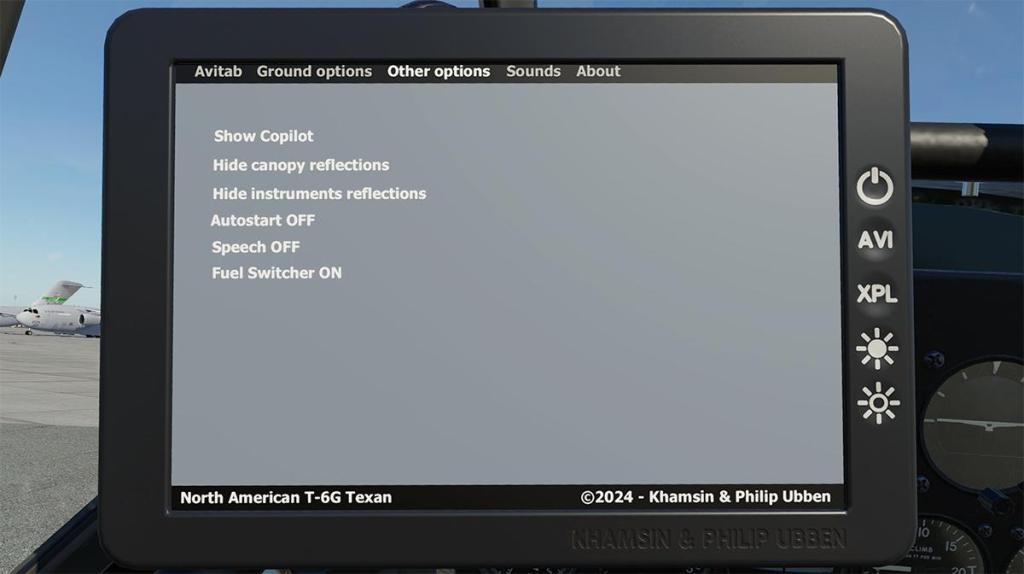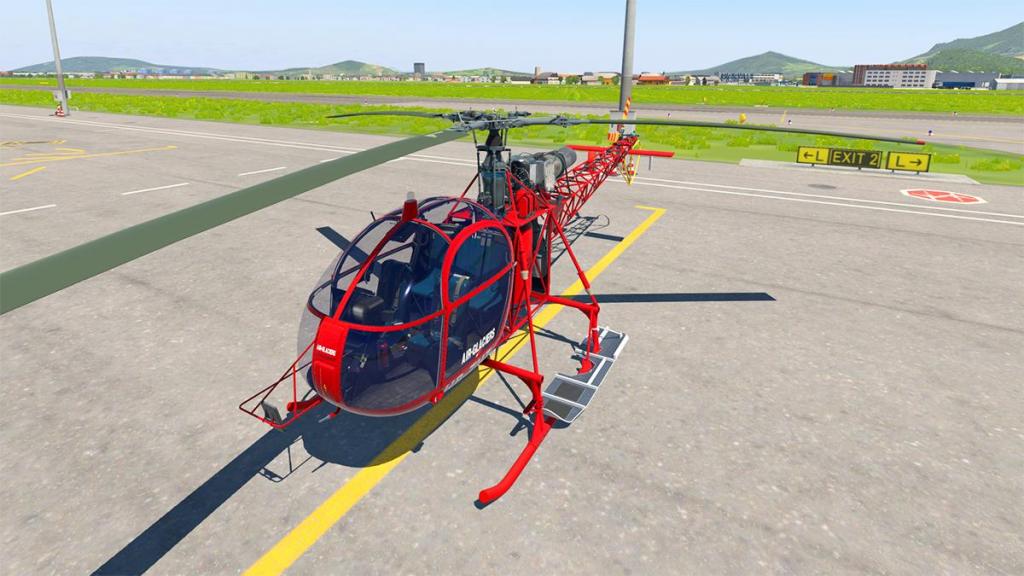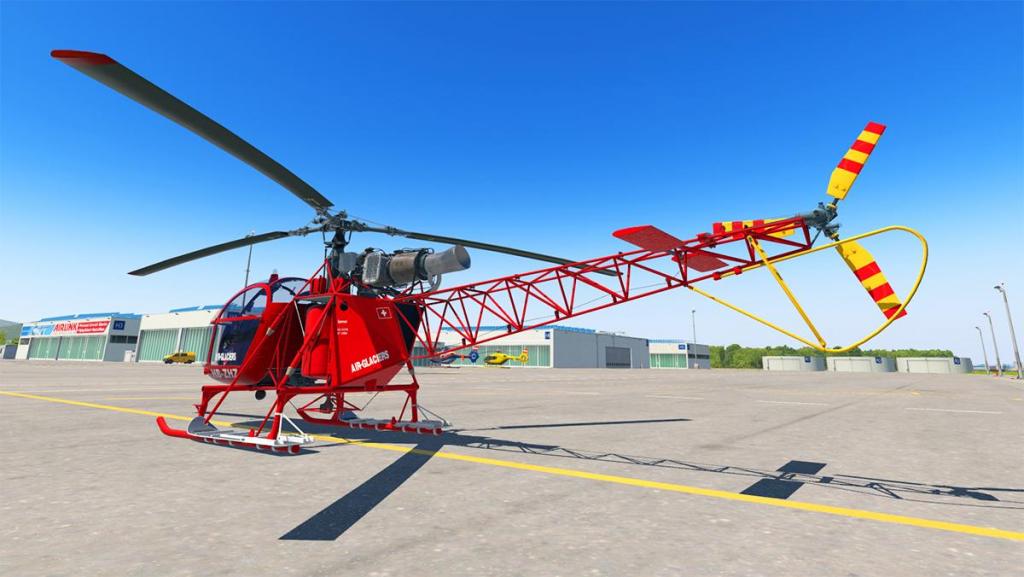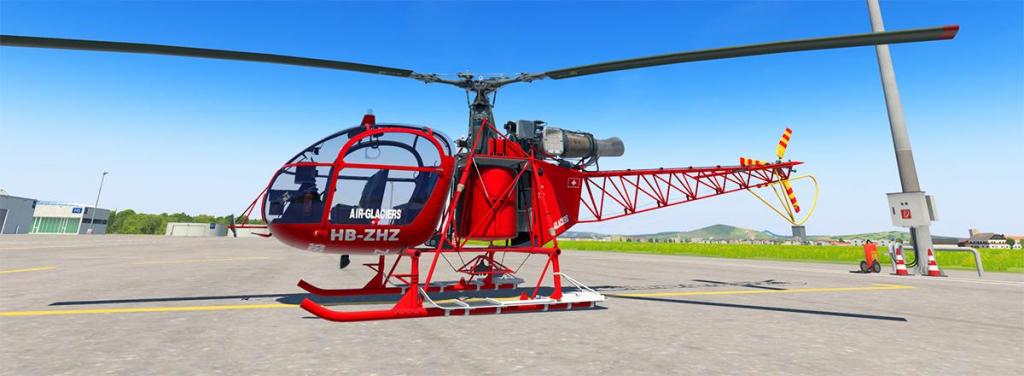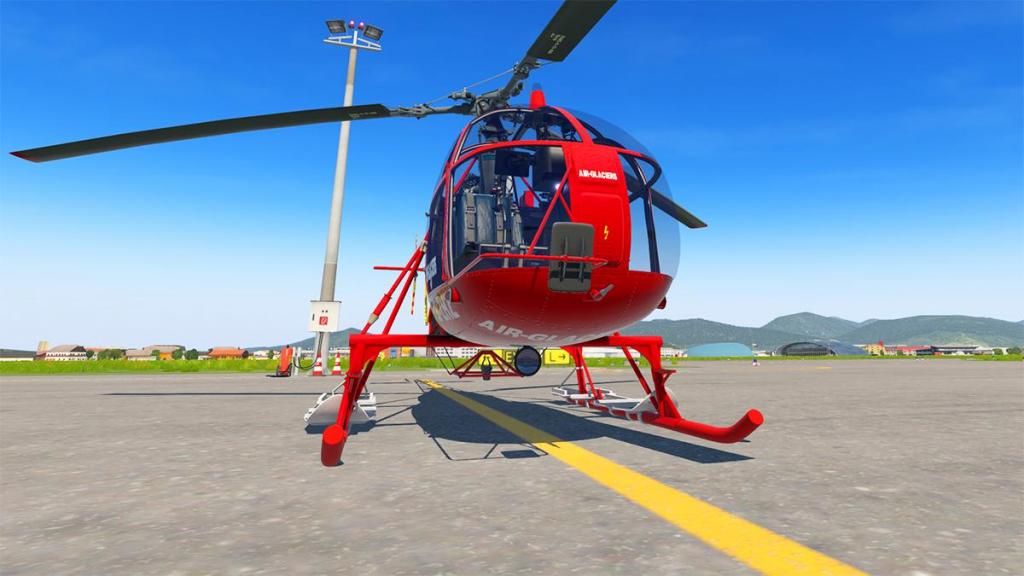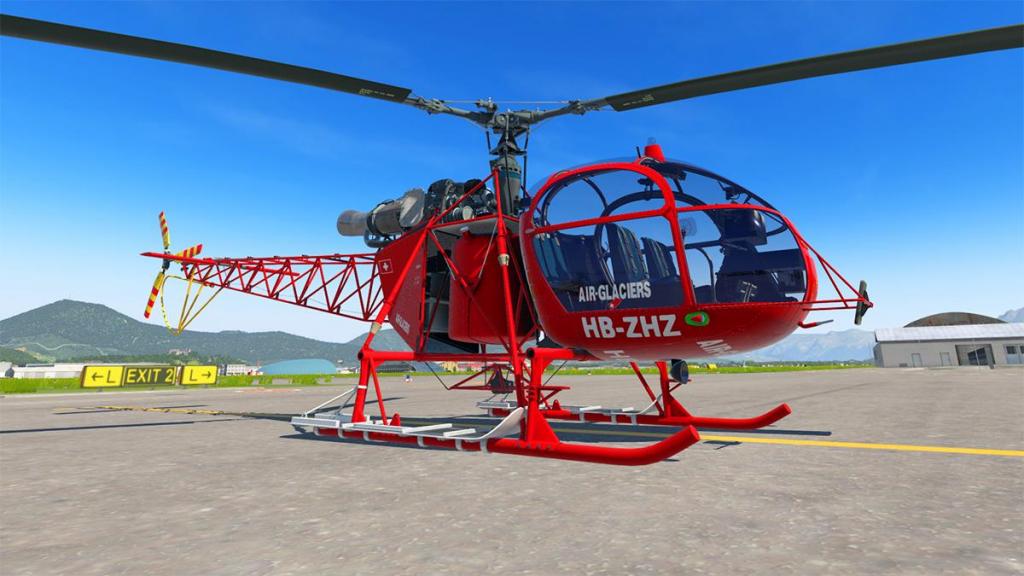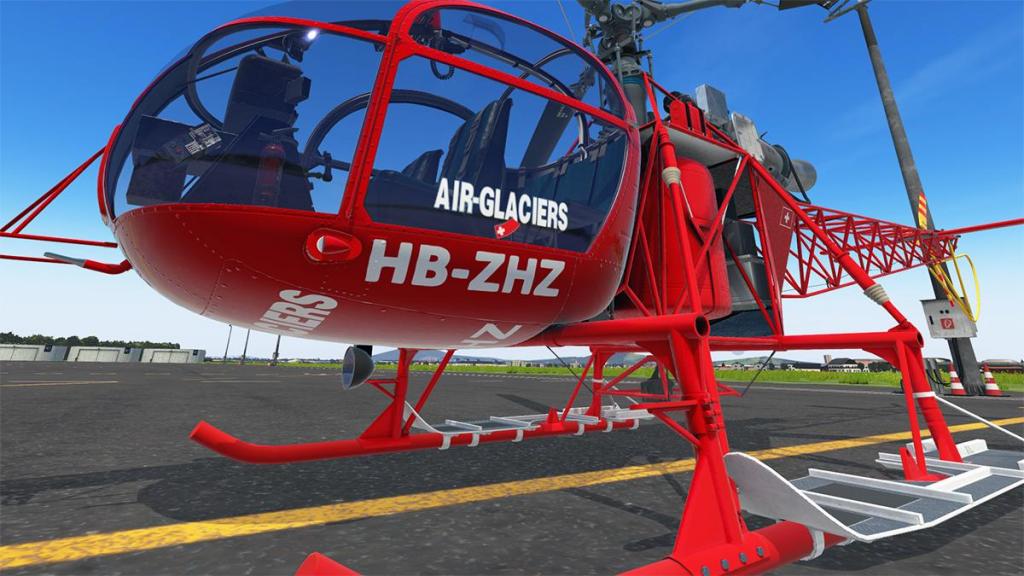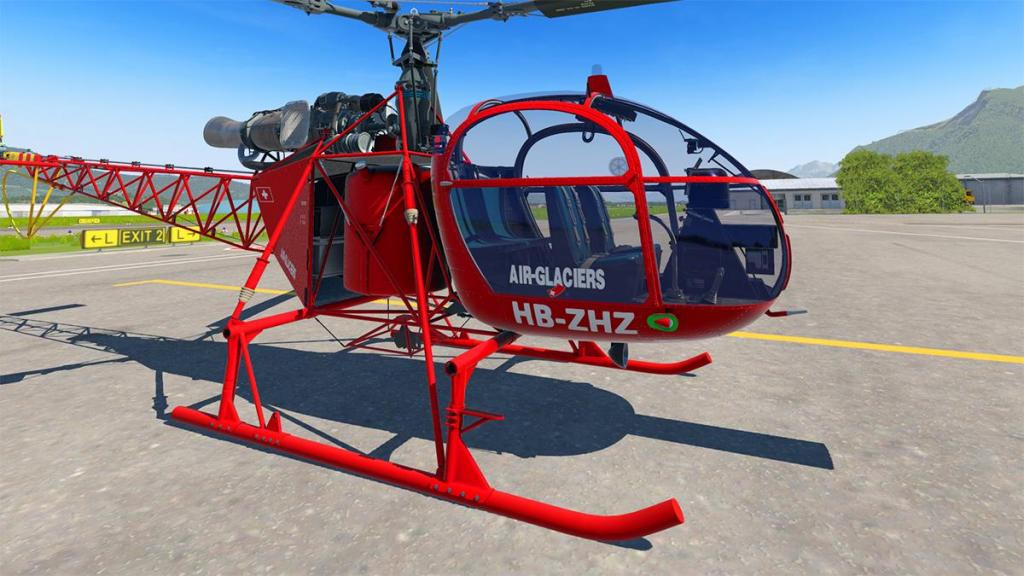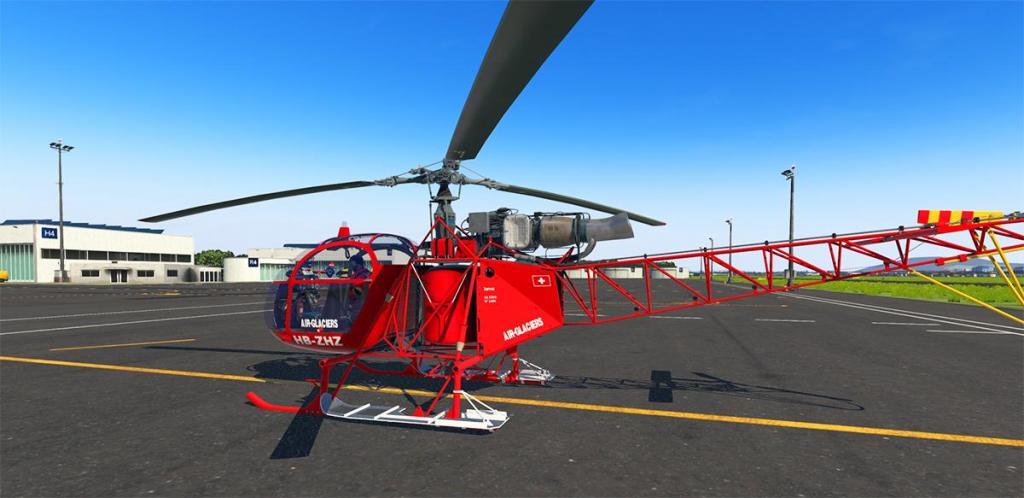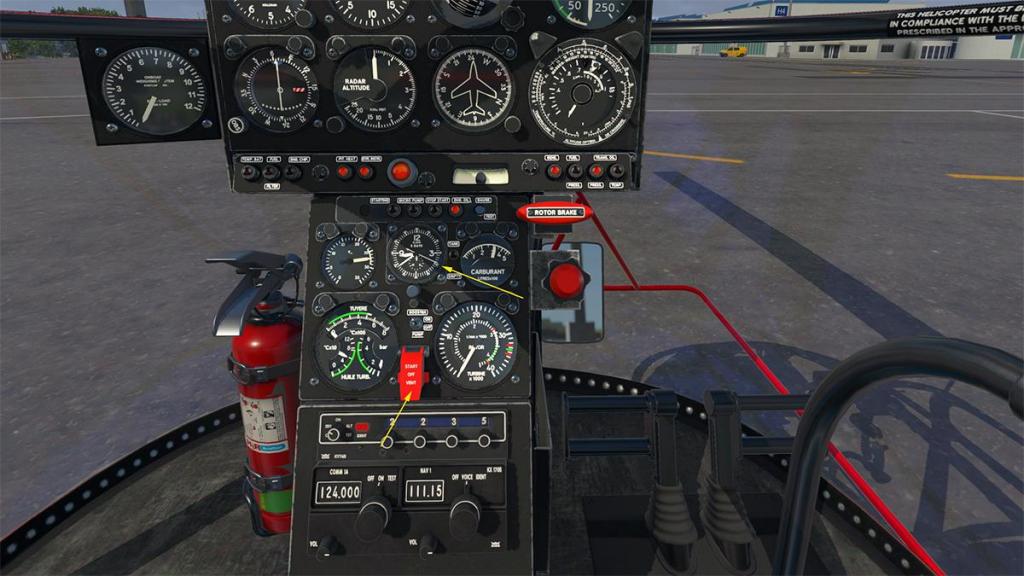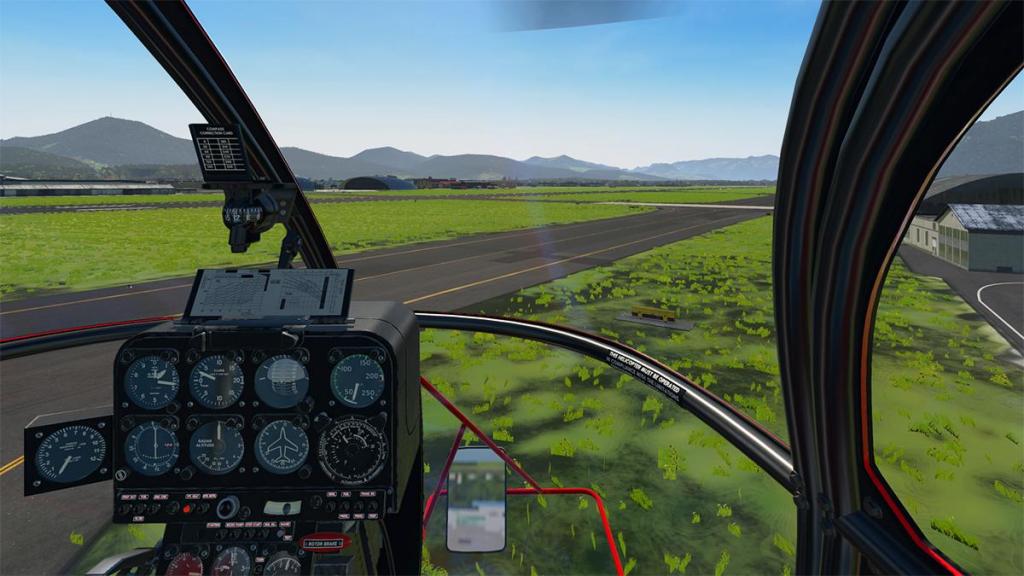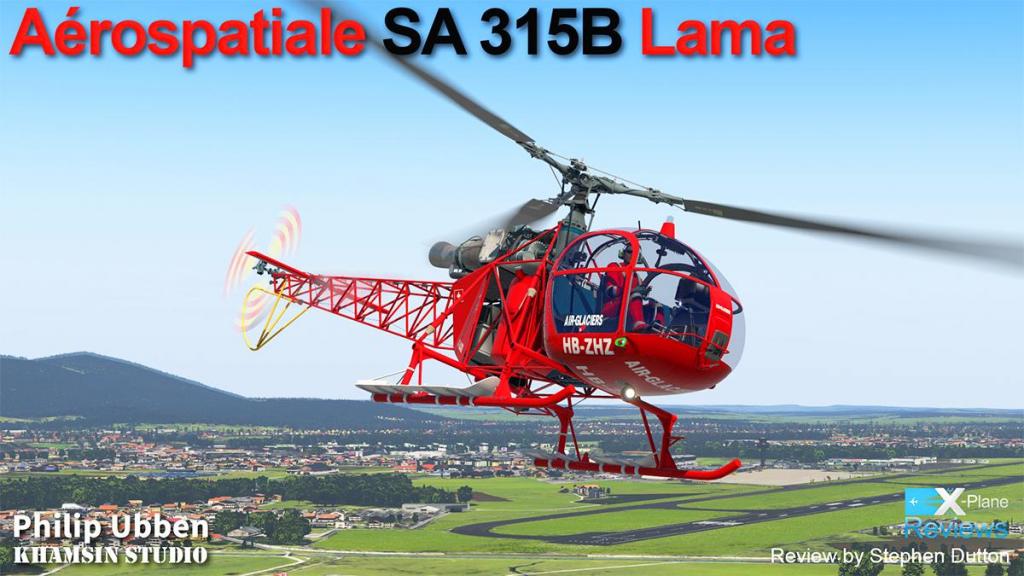Search the Community
Showing results for tags 'philip ubben'.
-
Military Aircraft Review : North American T-6G Texan by Khamsin Studios & Philip Ubben The extent of the full impression of the effects of the North American T-6G Texan are hidden behind the diversity of the models and the different variations of the original aircraft. Not only for the American Air Force and Naval services "SNJ". But the British Commonwealth versions under the "Harvard" moniker, and localised variations of the Australian CAC Wirraway and Canada's Noorduyn, and it was even developed later into the North American P-64, altogether there has been 15,495 aircraft built, and it had an operational life of 60 Years (1935 to 1995). No small feat for a trainer aircraft. Modified as the NA-26, it was submitted as an entry for a USAAC "Basic Combat Trainer " aircraft competition in March 1937. The T-6 was based on the NA-18, but with a foot longer wingspan, it was the first of the NA-16 series with retractable gear. It was similar to the BT-9, but with a larger engine, the 550 hp (410 kW) Pratt & Whitney R-1340 Wasp, and could accommodate two .30 in (7.62 mm) guns. Khamsin Studios is already known for classic WW2 aircraft, like his last release of the Mustang P-51, But lately he has mostly been working alongside of Philip Ubben, and in the releases of Helicopters like the SA 315B Lama, and now again here in unison with this X-Plane 12 release of the legendary T-6G Texan. The T-6 Texan is a two-seater, dual-controlled, single-engine trainer. Solo flight is permitted only from the front cockpit because of restricted visibility from the rear seat and inadequate controls in the rear cockpit. On training flights, the student uses the front cockpit while the instructor occupies the rear, except for instrument training when the student occupies the rear seat. The aircraft incorporates a steerable tail wheel, but not a free castoring rear wheel. Khamsin is a long time developer for the X-Plane Simulator, so design quality is actually expected, and he does deliver it in spades. Notable is that when X-Plane 12 is the only priority (there will be no X-Plane 11 version). You can use these advanced uprated effects and the lighting to deliver a better all round visual impact. All pure X-Plane 12 aircraft have this quality sheen, but still the talent of the developer is required to make it work in creating this extreme realism that X-Plane 12 can deliver. Here is it excellent, you feel the construction of the aircraft, and the rivets and paneling that goes into the creating the best overall effect. Notable is the excellent reproduction of the R-1340 Wasp, and the huge maul of the front of the aircraft to accommodate it Central hub and propeller (Two bladed, constant-speed Hamilton Standard) are intricately modeled here, as are all the air-cooled nine circular cylinders of the Wasp engine. In payware aircraft you expect this sort of high quality detail, almost is regarded as a benchmark to the current state of the Simulator. But still you marvel on how really good it all is, how far the developer has come in being able to deliver a quality of this high standard for you to enjoy and use. It is all brilliantly conceived and delivered in detail and authenticity here, you can spend ages just admiring it all. Note the excellent hydraulic lines in the gear bay, lovely deep cross-treaded tyres add to the realism, as does the simple strut arrangement of the main gear. Glass in the canopy frame is excellent, better is if you look for the mottled effect in certain lighting conditions, shows again the highlighted realism of the glass. Looking inside and the detail is certainly the pre-war period, but it is still quite comprehensive for a basic trainer aircraft. Notable is the fact that the T-6 Texan was created to replicate heavier service aircraft, to get the same feel and handling as the front line machines, not for just a trainee rookie pilot in taking their first steps in flight. The T-6 is far more up the grade than that, even in other roles as a combat aircraft itself, if only in a lightweight role. As noted the student goes up in the front, the instructor in the rear. But the differences between the two positions are not that much different, bar the aircraft's systems and radios. You feel and see more of the aircraft's frame in the rear, but otherwise they are not that much dissimilar. You sit on your parachute in the metal tub, stick and rudder pedals are all very heavy duty, but it's a very realistic cockpit to be in.... First view looks complicated, but the instruments and controls are all really very standard in their placement and use, so you will soon adjust to the layout. Fuel cock, Landing gear, Trims and Throttle/Mixture/RPM are on the left, right side are the Electrical switches, lighting and fuses (non-active, all DC circuits). Forward the instrument panel is a mixture of instruments, but you can sort of mentally place them, in flying instruments centre left, and engine readouts centre right, with a compass headup front. With the exception of the hydraulic pressure gauge, which is installed only in the front cockpit. A suction gauge is also provided in each cockpit. The gyro horizon, directional gyro, and turn-and-bank indicator are all operated by the engine-driven vacuum system. The airspeed indicator is operated by the pitot and static systems, and the altimeter, and rate-of-climb indicator are operated by the static system. Top level includes (LtoR); Nav 1 Pointer, Airspeed (MPH), Adjustable Compass, Artificial Horizon/ Bank Rate, Manifold Pressure. Second row; Back up Compass, Heading, Altitude, Rate of Turn, V/S Vertical Speed, Engine RPM, Carb Temp. Third Row; Ignition Switch, Suction, Pointer, Accelerometer G, Clock, Oil Temperature and Pressure, Fuel Quantity , Cylinder Head Temperature and (Outside) Air Temperature ... .... far right is the Ampere, and far left lower is the Hydraulic Pressure Gauge. Primer knob is centre right with external lights lower, right lower is the COMM1 and NAV1 radio, with a Transponder set below. Rear seat instrument layout is almost identical, except for radios and transponder. Menu Immediately right of the forward pilot is a "Data Case"... inside is the Tablet/Menu, that when activated (hotspot) is positioned upper left of the pilot. It has five tabs; AviTab, Ground operations, Other options, Sounds and About. Five buttons on the right side of the bezel covers; Power, (not working), AVI (Not Working), XPL (close tablet), Brightness (brighter, darker and again not working). AviTab we will look at in a minute.... Ground operations is the default screen... here you can change the T-6G aircraft options, including a Prop "Spinner". "Early or Late" Canopy VHF and ADF aerials SNJ hook... activation knob is right side pilot seat Gear doors and Wheel covers Bottom left is the adjustable Left or Right Wing "Fuel" Weight in Kgs or Lbs Other options Here there are six options.... first one is to "Show (rear) Copilot". Both pilot heads are animated, and are very realistic, and in flight the actions are different to ground... but both pilots are the same character. Second and third options are the Canopy and Instrument reflections (on/off). Fourth option is an "Autostart" to start the aircraft automatically, this also adds in the "Speech" Option, that will talk you through the engine startup procedure... last Option is to have the "Fuel Switcher" ON or in auto mode. Sounds & About Both pages are first the standard X-Plane "Sound" levels, and the the "About" information of the different areas of work by each developer in Khamsin and Ubben... the aircraft version number is shown here as well. The AviTab Tablet as we have shown is also available (plugin required), it is the standard AviTab layout and tools, but you can rotate a chart from Portrait to Landscape... quality is not very good at chart distance. Liveries Eleven Liveries provided by Khamsin, and all are quite exceptional for authenticity. TA-127 is the default, but included are Big Red, G-TSIX, Lagarto, Popeye, Marines, RCAF, Spanish Lady and the famous Harvard (RAF) "Wacky Rabbit". Plus there is a "Bare Metal" aircraft. Flying the T-6G Starting up a Warbird is never easy, the sequence here is still a procedure to be religiously followed, but tricky if not done correctly. Officially you first select a fuel tank containing some fuel with the fuel tank selector. Then use the hand fuel pump to build up some fuel pressure (the pressure gauge should read more than 1 psi for the primer to work). Push the mixture lever to fully forward. Use the primer to pump at least 1 stroke. (Because over-priming isn't simulated in this first release you could pump some more strokes before hitting the starter and the engine might not need any further priming after startup. Now continue to use the primer it always seems to die until the rpm does stabilises around 700rpm. (You can either wait until the rpm does drop significantly before each new primer stroke or just pump a few fast strokes until the rpm won't drop anymore.). Tricky is the use of the primer... First you have to "Unlock" it? this is done via a hotspot arrow, hidden in the top section of the pump handle, then you can unlock and pump or prime the engine. Don't forget to relock the pump when the engine is running. Highly notable is that the engine start switch is a pedal set between the rudder pedals! If you don't want the palaver of awakening a grumpy old engine into life, then you have the "Autostart" Option on the menu, which is very good with it's vocal patter over the start operation... Highly realistic are cylinder (firing!) startup sounds as you feel the inconsistent firing, then the cycle of igniting the fuel, which is then produced as an effect out of the exhaust... it is really all well done and realistic. The prop settles down to a very authentic clatter in idle... sounds are very, very authentic as noted... A small note in using the "Auto" startup feature, is that make sure your throttle is set upwards, beyond the idle point, if not when the "auto" sequence finishes, then the engine will just "conk" out and stop again, not too much, to give it too much power, but enough to fuel the engine until it warms up. The mixture range (lean-rich) is extremely small, have the mixture set too high and the T-6G will taxi very fast, too low and it just shuts the engine down... but there is fine mixture window between the two settings, were you can get a controllable taxi speed... it is worth finding. So the taxi is nice if can find your comfort zone, but tricky in that the turn circle is one of the widest I have found in a long time, you can help it along of course with a few pumps of the left or right toe-brake, but in reality it is a wide turning circle. You can of course push the stick forward to unlock the tail-wheel, pull the stick back again to lock it. It sorta works, but I found that tapping the toe-brakes in the direction you want to turn was a better way of pulling off the tighter turn circle. Adjust the mixture for more power, and your ready to go... The Pratt & Whitney R-1340 is the larger (louder) engine here, and it sounds glorious with the power on, tricky though is the extremely light tail, once it lifts the aircraft will shimmy badly, and it needs a lot of skill to control, it feels too light to me... so is it the X-Plane dynamics or just developer tuning... of course tail-draggers a tricky to fly (takeoff), but the T-6G seems too unrealistic at this point? Once clear and you enjoy the highly realistic gear stowage, first one strut moves, then it stops to allow the other strut to retract, then finishes the operation.... very good. Once airborne, you feel the weight of the Texan, but also the restricted power to climb? Rate of climb is noted at 1,200 ft/min (6.1 m/s), but you never get even close to that climb rate? Push the Wasp or put it on a high throttle for more power and the engine gives in spectacularly! So you have to keep the RPM well out of the red zone, around 20 (lower green band) to stop it exploding, so this highly restricts your climb rate. Performance is a Maximum speed: 208 mph (335 km/h, 181 kn) at 5000 ft (1,500 m), a Cruise speed of 145 mph (233 km/h, 126 kn) and a Range: 730 mi (1,170 km, 630 nmi). The Service ceiling is24,200 ft (7,400 m). Important is getting your Trims right. The Rudder Trim is the most important, then sorting it out to the right level with the Elevator Trim. Get both right and the T-6G will find the correct balance to fly manually. Important to get correct as there are no artificial helper's here, with no Autopilot installed, the Texan is a pure manual flying machine... would I like an autopilot? that aspect is debatable, but I like authenticity over modern features. Once sorted the T-6G is excellent in the air, a bit heavy (ponderous?) but extremely nice to fly and to manoeuvre with great sounds coming at you from the nose... The view from the Instructors station is excellent, but missing is the forward (animated) student pilot, having the choice to have the forward pilot visible (like with the Aermacchi M-346) would be a nice feature here. Lighting Cockpit internal lighting quite is basic, there are two fluorescent lights in the instrument panel and lights on each side panel. The T-6G does have a load more lighting features, including a full panel for "Recognition Lights" but none are operable or not done yet. That said, it looks very good internally and externally in the cockpit. External lighting is basic as well... there are two inset wing landing lights, navigation lights and that is about it, there is "Strobe" switch, but it doesn't work... so again in areas it feels there is still work to be done on the lighting overall. What is here however is very good Time to land... so I reduce the speed. Flaps are noted in 0 - 10 - 20 - 30 - 40 - 50 steps, but the reality is they are only three degree phases, 0 - 22 (ish) - 50 (full)... 125 MPH is the limit, but a full Flap will give you a level flying speed of around 100 MPH. I found the Texan very stable in the approach phase, quite easy to focus on the runway and keep a straight line in that same focus. Down goes the gear and the speed is reduced to 90 knts, notable is the drag effect on the gear when deployed, so you have to throttle up a little to account for that extra drag... I loved this approach phase, I was very, very deep into the aircraft and flying it as smoothly as I could. As I reached the threshold, I lifted (flared) the nose to rub off the speed, I didn't want to do a three-pointer, but still wanted the tail as low as it could be possible. A touch, then another... and I am down. Again the yaw was tricky until the speed had reduced and the tail was happily down, it takes a little practise to get it right with the rudder and toe-brakes, but its a foible to learn with these sort of low rear aircraft. Your thought go out to those naval boys, landing this aircraft on a shifting carrier deck, you can practise that of course in X-Plane, but I guarantee it was be a very tough challenge to get it right... Overall this was an excellent machine. _____________ Summary Khamsin Studio's is already known for classic WW2 aircraft, like his last release of the Mustang P-51, But he has mostly lately been working alongside of Philip Ubben, and in the releases of Helicopters like the SA 315B Lama, and now again here in unison with this X-Plane 12 release of the T-6G Texan. Modified as the NA-26, it was submitted as an entry for a USAAC "Basic Combat Trainer " aircraft competition in March 1937. The T-6 was based on the NA-18, but with a foot longer wingspan, it was the first of the NA-16 series with retractable gear. It was similar to the BT-9, but with a larger engine, the 550 hp (410 kW) Pratt & Whitney R-1340 Wasp, and could accommodate two .30 in (7.62 mm) guns. This is another exquisite design from Khamsin Studio, X-Plane 12 delivers very high quality aircraft, and this T-6G Texan is no exception, it is beautifully created and detailed, with a perfect soundscape and sound panel. Features are basic, with "Early" or "Late" canopies, Prop Spinner, VHF and ADF aerials, Gear doors and Wheel covers and SNJ tailhook (naval), excellent animated pilots are also included but only the rear can be hidden, front pilot would be nice visible if flying from the rear Instructor position. Popup menu also includes automated start procedure with vocal instructions, and the built in AviTab, but there is no autopilot or any helpers here. Everything is very, very authentic to this extensive service (60 Years) trainer aircraft and a few went into service (combat) as well, so you get that very genuine article feel and use of this very unique aircraft. It is certainly a huge credit to the skills of the developer of what they have delivered here, but totally authentic as well. Khamsin and Ubben have a very high record and a high regard in what they deliver in aircraft for the X-Plane 12 simulator, this T-6G Texan is no exception. But again you feel and use the step forward in quality and effects that dedicated X-Plane 12 designed aircraft deliver, it is quite extraordinary in what is now achieved in Simulation... This T-6G Texan is another banner aircraft to show off those highlights... Highly Recommended. ________________ The North American T-6G Texan XP12 by Khamsin Studio and Philip Ubben is now available from the X-Plane.OrgStore!... Here: North American T-6G Texan XP12 Price is US$32.95 Requirements X-Plane 12 (not for XP11) Windows , MAC or Linux 8GB + VRAM Recommended Download Size: 460 MB Current version: 1.1 (March 25th 2024) Aircraft download is 456Mb, and unpacked, then installed in your X-Plane Aircraft folder 636Mb. No authorization on startup is required. Documents manual_t6g_khamsin_XP12 quick_start_t6g_khamsin The provided manual (31 Pages) is excellent in being a notated original T-6 authentic manual, Quick Start (2 Pages) is mostly flying tips... Designed by Khamsin Studio and Philip Ubben Support forum for the T-6G Texan XP12 ________________ Windows - 12th Gen IS1700 Core i7 12700K 12 Core 3.60 GHz CPU - 64bit -32 Gb single 1067 Mhz DDR4 2133 - PNY GeForce RTX 3080 10GB XLR8 - Samsung 970 EVO+ 2TB SSD Software: - Windows 11 Pro - X-Plane 12.09rc5 (This is a Release Candidate review). Plugins: Traffic Global - JustFlight-Traffic (X-Plane.OrgStore) US$52.99 : Global SFD plugin US$30.00 Scenery or Aircraft - KTCM - McChord AFB - Seattle - Boeing Country 10.5 by Tom Curtis (Sorry not now available) ________________ Military Aircraft Review by Stephen Dutton 26th March 2024 Copyright©2024: X-Plane Reviews (Disclaimer. All images and text in this review are the work and property of X-PlaneReviews, no sharing or copy of the content is allowed without consent from the author as per copyright conditions) All Rights Reserved
-
Aircraft Review : Aérospatiale SA 315B Lama by Philip Ubben and Khamsin Studio Earlier in the year X-PlaneReviews reviewed the Aérospatiale SA 341B and SA 342J, or the "Gazelle" helicopter by JRXDesign, and that was an exceptional helicopter for the X-Plane Simulator... here we have the exclaimed predecessor in a variation of the Aérospatiale Alouette III . The SA 315B Lama was originally designed to meet a Nepalese Army Air Service and Indian Air Force requirements for a rotorcraft capable of undertaking operations at hot and high conditions. Both countries possessed extreme mountain ranges in the form of the Himalayas in which even relatively powerful medium-sized helicopters could not be effectively operated within, thus there was an expressed desire for an aerial vehicle capable of operating in this challenging environment. To achieve the desired performance, Aerospatiale elected to combine elements of two existing popular helicopters in their inventory, the Aérospatiale Alouette II and the Aérospatiale Alouette III to produce a new rotorcraft specialised for high altitude performance. Specifically, the new helicopter, named Lama, was equipped with the Alouette III's Turbomeca Artouste turboshaft powerplant and its dynamic systems, and was furnished with a reinforced version of the Alouette II's airframe, a hybrid aircraft is you so like for a specific mission. It was to be designed primarily for use in particularly high and hot environments. The result was a helicopter with impressive performance values for that time. This helicopter weighs only 1021 kg when empty, but with a maximum take-off weight of 1950 kg it is still able to hover freely in the air at an altitude of 4600. It is therefore not surprising that this helicopter was able to hold the absolute altitude world record from 1972 to 2002 with a flight altitude of 12442 meters. SA designation is in the earlier Sud-Aviation manufacturers name. The systems and dynamics are by Philip Ubben, but the modeling is by a very familiar X-Plane developer of Khamsin Studios, so in reality you get the best of both worlds... Khamsin's last release was the coveted DHC-1 Chipmunk v2 First view of the SA 315B Lama is of a very basic airframe, The exposed welded web frame is with all the components just added on internally or externally to make up the the aircraft, It feels like an aircraft extremely pared back without any external panels to cover the internals and everything is on view to dissect at your leisure. And very, very good is the modeling here by Khamsin. The ARTOUSTE III from Turbomeca is a single-shaft turbine with reduction gear. Normal operating speed is 33,500 rpm, which is reduced by the gearbox to 5,864 rpm. The turbine is designed for a maximum power of 870 hp, but in the SA315B it is operated only at reduced power of 590 hp usable for short periods at peaks and at 550 hp permitted continuous power. And extremely well reproduced here from Khamsin, highly detailed with every engine component highly visible, and great finer details that other developers would leave out, as an example in the internal exhaust trumpet, really well finished off... note the excellent mesh air inlet covers. Both the tail driveshaft and control cables are highly visible (and feel very venerable, exposed as they are). The huge suspended 575 litres capacity fuel tank (Jet A-1 kerosene is used) is also highly visible, with the electrical and avionic bay positioned directly behind. The reduction gearbox looks very venerable as well... but the engine front detailing is excellent. So on detail you just can't fault the work here. Rotor head is also exceptional.... and love those head strengthener bars. All the assembly components are all highly reproduced, links, bars and the rubber covers are perfect.... Control Movements I am quite particular to the aspects of the head and blade movement. These are the action created when you move the controls in the machine... if the required movements are present, then the full development of the helicopter has been through. In this case every movement is visual. The forward, reverse and left, right angles are all and well represented in the middle control plate and head/arm assemblies... Secondary movement is the twist of the blades (cut) as you use the collective, again all the movement is perfect, but Khamsin goes further in also reproducing.... ... the control rods all the way from the cockpit and up the the rotor tower itself... Very, Very impressive. The same detail and animations are also on the tailrotor assembly. All the links and gearbox are beautifully recreated, and right down to the three blade (not the usual two) tailrotor blades... and again the yaw movement is perfect... really exceptional in detail. Cabin The bubble cabin holds a Pilot+Four Passengers... very, basic as it is just another frame with glass and panels attached, but really well done in context.... it just oozes quality and detail, with lovely if perfect reflective glass, which is always a nice thing on a helicopter in a visual sense. Both doors open via internal active zones on the handles (internally only), and they both fold far front forward... the door supports are really well done, and so very, very basic... in a bar and support pin/hinge, sadly and unusual on a helicopter the doors can't be hidden or removed? Internally there are two clam bucket seats for the Pilot and front passenger, and three sling leather seats on a metal frame rear, and all in a lovely "French Blue" style. Seatbelts and their webbing on the front seats is again excellent, but there is non fitted on the rear seating... .... looking forward this is a single control machine with only a cyclic and rudder pedal set right, no controls for the left passenger or pilot. Everything in here and on the machine screams only one word "weight", "weight", "weight"... get as much weight off the aircraft as much as possible! The instrument panel is again easy and basic, but very well detailed as is the simple switch and lighting control overhead panel... .... look rear and upwards and the exposure of the rotor tower and gearbox/engine is situated so close to you, and is a little scary, so much machinery with so many forces in motion, so close, so near! aggh. Main flying instruments are set four across and two rows down... top row (left to right); Altitude Indicator, Vertical Speed Indicator (V/S), ball Artificial Horizon and Indicated Air Speed Indicator... second row is the Course Deviation Indicator (CDI-VOR-Instrument), Radar Altitude, Course Gyroscope and then an interesting if confusing Collins-Pitch-Indicator. Philip Ubben's one of the developers has created a video to explain (thankfully) how it all works, plus more videos relating to the aircraft, and they are all worth watching, certainly for the Pitch-Indicator. Hung on the left side of the instrument panel is a Slungload scale. Note the excellent Fire Extinguisher bottle hanging right, and Rotor STOP pull handle. Lower panel are warning lights for; Battery Temperature, Fuel Filter, Engine Chip, Pitot Heat, Gyro instruments... the big red centre warning light is for the "Throttle Warning", Generator, Fuel Pressure and Gearbox Pressure and Temperature... centre is a Rate of Turn bubble. There is a secondary row of warning lights below; Automatic Startup, Micro Pump, Stop/Start, Engine Oil Warning and a Fuel gauge and warning lights test. Lower pedestal are five dials that cover; Battery voltage, Stopwatch, Fuel Gauge (Litres), Turbine: Tube, Oil temperature and Oil Pressure and finally a Turbine and rotor RPM gauge. Avionics include a Bendix/King KY76B Transponder, and a Bendix/King KX 170B COMM (VOR 1) Radio. Above you is an Overhead Panel (OHP) that has mostly (non-working) Fuses/Contact Breakers. Top are two lighting knobs that cover the Instrument Panel and Panel Spotlight. The switchgear covers; Slungload scale (light), Pitot Heat, Position Lights, Instrument Lighting (switch), Generator Switch, Landing Light, Radar Altitude Switch and Cockpit Ventilation Switch. On the floor between the front seats there are two leavers that cover the Fuel Shut-Off valve and Throttle or here the Clutch, the nicely shaped Collective is also well placed and beautifully created. AviTab/Tablet/Menu Click the active zone on the right bar text, and up pops a Tablet and Menu... the tablet can be hidden again by selecting the "eye" icon on the lower left of the tablet... Lower Tablet there are three buttons, AviTab (Plugin required), and dimmer and brightness icons (AviTab only). AviTab is the usual set up, and the Tablet is well placed for use and thankfully good for reading detail and using the map feature (some are simply too small in placement,text and size to use comfortably), But this eyeline set up is perfect. The Menu covers Settings, Equipment and Aircraft Custom Settings... plus there is a very good weight and fuel layout. Top right are the "Settings" Menus... Visual Settings : There are three options in the Visual Settings Menu that cover; Canopy (Glass) and Instrument Reflections, and a "Downwash" or Dust Vortex Simulation. Equipment : Equipment choice include a Mirror out front and Snow Skids.... Another option lower left on the tablet is the "Baskets" that carry on each side backpacks and ropes depending on the weight selected. The Lama looks positively bare without any options attached. Custom Settings : "Automatic Pitch Limit-Bug" This uses the small white auxiliary slider in the Collins pitch indicator which can be automated to show the currently valid pitch limit. "Over-Pitch Fail" Is a switch on a not quite realistic overload effect when the pitch limit is exceeded. "Turn Blade To The Front", final setting is to rotate the blade forwards to the front when parked (the rotor blade must be turned straight forward to prevent the turbine exhaust gases from damaging another rotor blade on start up). Notably missing are blade "Tie-Downs" and to "remove doors" options, very odd in chopper options? To the left of the Tablet is the Weight & Fuel settings... You can set the weight of the front Pilot+Passenger, back seat Passengers, small cargo (bags) in the Cabin and the fore-mentioned Basket Cargo weights. Then you can set the Fuel (Kg) and it's weight in that large tank behind you. These weight settings can be seen with a CG (Centre of Gravity) Scale (middle) and the Total (Gross) weight lower right... if the aircraft is too heavy then the Total Weight Colour will change to a darker colour. As a weight and fueling system it is very, very good and very easy to use... Adding weight does not however add in any Passengers or their bags? You do get a very nice and head animated pilot... but nothing else, so the cabin does feel a bit empty, I think that adding in extra passengers would have been a nice idea, and give a fill out to the machine inside. There is a (very) basic lifting hook underbelly, but there was no details on how to use it, or if it could be used to carry loads? ___________________ Flying the SA 315B Lama The starting process of the Lama is quite procedural... The basics are however simple, check the controls and turn on the fuel (cock), then release the rotor blades from the rotor brake... Battery & Generator on, set Strobe and Navigation lights, then do an instrument panel "Gauge Test"... It is VERY important the Throttle/Clutch is in the rear OFF, position... if not the engine won't start, which is the opposite of most Helicopter governor starting positions... You use the Timer centre pedestal for a lot of parts of the starting procedure... Turn on the Booster pump switch then run the timer for 20 sec... ... then you open up the Red Switch cover and select the switch to the upper start position, and the engine should now start it's start-up procedure... again another timer sequence. You get a green STARTUP light, but then also a yellow "MICRO PUMP" light that should go out again within 15 seconds, the RPM should now be rising.... but watch the ball Artificial Horizon and companion Course Gyroscope instruments (red arrows) as they configure themselves... it is brilliant. The Turbine Artouste engine is now running... when the RPM reaches around 16,000 and 19,000 rpm, as this is at the idle position and you now wait for the engine and systems to warm up and settle. Startup sounds are really very good, and are noted as High Quality Physics driven FMOD sounds... I have heard better, so they fall somewhere in the middle. The turbine is now running, but the blades are not turning? To engage the rotor, you bring the "Throttle/Clutch" Sloooowly forward, and the blades should now start to turn, You increase the throttle as noted slowly for around 34-45 seconds until the two dials meet up around 21,000 rpm... this is still the idle position and you will find the throttle position is still only half-way, but the rotor system is now engaged. Look back and up and the rotor tower feels very, very close and now violently active, it will either totally scare you or thrill you in equal measure. There are headsets hanging from the OHP above you, selecting the headset will calm the noise now rattling around you. These procedures and more are all very well explained in the Manual, and there is also a good video as well provided by Philip Ubben. __________ Time to fly... to bring up the power you move the Throttle/Clutch lever until you reach the green zone around 34,000 - 35,000 rpm The collective needed a fair distance to start to cut into the air and give you some upward movement, immediately apparent was the amount of right rudder was required to hold the yaw, you needed a boot full to keep the SA 315B straight, then it still drifted tail right... .... that said, the Lama was quite nice in the hover, so more comfortable, I turned left and climbed out of LOWS (Salzburg). You certainly expected a very light control aircraft, but with a lot of power, and that is exactly what you get here... Overall it is quite easy and quite brilliant to fly... ... but I was being swooshed around the cabin, my vision was not straight but moving all over with the movement of the aircraft, so I was over compensating the aircraft movements to try to stop the inconsistent visual movements... very discomforting? First I thought it was the payware plugin XPRealistic, as it has all these sort of visual gizmos, but the movement areas are usually switched off, certainly the "Head Anticipation" option... but XPR with turned off, the Head Anticipation movement was still happening in quite a seasick way? With the SA 315B Lama you get the GeForce effect plugin... this is situated in the X-Plane Banner Menu/Plugins Menu... ... and I was set at FULL Lateral Intensity (100%) and FULL Vertical Intensity (100%)... no wonder I was feeling sick. I adjusted the sliders down, basically 50%, but was still not happy, so turned the plugin off completely... this is of course a personal option, I don't like over head movements (shakes and vibrations I love), but I hate my visual movement moving independently, certainly when I am trying to adjust a knob or something... and in this case it made my flying jerky, as I was going one way and the chopper was going the other, so I over compensated, and that just made the aircraft or my physical flying jiggly. There are no helpers or tools like an autopilot (or usually SAS (Stability Augmentation System)) or "Force Trim" at your disposal, it is all about the physical manual flying in here... after some slight trimming I was breezing along quite nicely at 150 knts over Salzberg... ... the view out is amazing, as you feel you are just enclosed in glass, which of course to are, do the tight turn and there is no heavy blade slap... that sound is notably missing here, but the machine is excellent in direction changes and absolute feel. ... the moving tower of rotational power behind me still looked just as threatening.... now even more so! Specifications - Maximum speed is 192 km/h (119 mph, 103 kn) with a Range of 515 km (320 mi, 280 nmi, the Service ceiling: 5,400 m (17,715 ft) and the Rate of climb: 5.5 m/s (1,080 ft/min). In the machine the official numbers feel a bit low, it feels faster, more of a climber than what is specified with that light weight. Lighting is quite basic but good... Adjustable instrument panel and overhead panel lighting... ... the instruments have a nice soft tone to them. Externally there is just one underbody landing light, Navigation lights and two beacons, upper cabin and under cabin rear, again just the basic necessities. Time to head back to LOWS... Several things? One your movements on the cyclic have to be smooth, in that you can't jiggle the stick to fly it, as the aircraft will respond quick savagely or kink around... and it was a feeling I didn't like? It said there was no give in the controls, it felt too direct? I commented on the Gazelle in being; smoothly... with as little input of the controls as possible, you don't move the cyclic as nudge it slightly, with the same minute movements to the collective to control the height, so constant practise here is a religion on this aircraft, you feel the inputs, touch this way, then that, but absolutely nothing sharp or with any long movements of any of the controls But that nudging here as I just noted and recreated in the Lama, it instead just gave you those sharper movements, over a period of time it can get tiring in if you are wanting just a nice and clean flight... I might have to spend time adjusting the control feedback and see if it can be dialed out more? and obviously more flying time to adjust to the aircraft's particular behaviour. Secondly that to lose altitude, you physically have to lower the nose... ... If you just lower the collective to go down, then you lose speed not height, as you know, lower the nose to go down and you go faster, so if you are at altitude you have to take a long slow descent at around 500 fpm-600 fpm and be good at getting it all right of when to be at the right speed and height coming into the airfield or landing zone, experience and you can or should be able do this automatically. There is an excellent "White" zone on the air-speed indicator, that denotes the speed when transitioning from fast forward flight into the lift/downward thrust zone or known as Effectively Translational Lift (ETL), and incoming to the hover. The white band starts around 50 knts Once below the last 25 knt mark you are more power drifting than flying, so I touch the stick in each direction until I find the hover position, watching the yaw closely on the tail... Certainly the time on the Gazelle really helps in the feel, but I think the SA 315B is a lot easier and controllable in this aspect. Once happy I let the tail (yaw) go a little to swing the Lama around and feel that hover turn movement... then I picked my spot to land and did a slight drift forward until over it, then reduced the collective slowly... but needed just a slight touch back to stop a drift forward before touching the ground... all in all, on a new airframe, I was pretty pleased with that. Settled I reduced the throttle back to the 20,000 rpm idle position, and the power reduced nicely down... ... then to shutdown the turbine, the throttle is pulled right far back then to the full rear position and the start switch can then be also switched to OFF. From below 175 rpm rotor speed, the rotor brake can be used if necessary. One rotor blade should then point forward to avoid a rotor blade lingering over the still hot turbine, or use the Tablet tool to do so. ______________ Liveries There are sixteen high quality liveries, including a full white aircraft... Switzerland gets the most number of registrations. HB-ZHZ is shown in two colour schemes with 2008 and 2013 dated (2013 has the black skis). HEER is a fictional Alouette scheme, C-GAWW is default. ______________ Summary A relative and part of the Aerospatiale Alouette famiily, the SA 315B Lama is the hybrid of the Aérospatiale Alouette II and the Aérospatiale Alouette III to produce a new rotorcraft specialised for high altitude performance with the combination of the Alouette III's Turbomeca Artouste turboshaft powerplant and its dynamic systems. It is an aircraft were everything is pared back to the absolute minimum to achieved that high altitude performance. The systems and dynamics are by Philip Ubben and the modeling and textures are by a well known X-Plane developer Khamsin Studio. And the old X-Plane developer quality shows here... the modeling and detail is simply outstanding, quality oozes out of every pore of the aircraft. Fully animated rotor head and control rods are first class, and the exposed innerds and Artouste engine detail are again first class, overall the modeling is perfect. Internal detailing is also first rate with a single animated (head) pilot. Sixteen high quality liveries add in the choice of keeping everyone happy. A tablet provides an option menu, AviTab and a really good Weight & Fuel layout.. again faultless. The aircraft is what you would call "Bare bones", so the feature list is good, but not lengthy... but you can't remove the doors and internally passengers would be a really nice addition, which is common on most helicopter packages. Systems are simply first rate as well... start up sequence and flying controls are all expertly done, But I don't like the GeForce motion (a personal choice) and the although the Lama flies very, very similar to the Gazelle, it feels a bit too rigid with no give in the controls, creating sudden movements in straight line flight, but is also nice and quite easy to fly and control in the hover, were as the Gazelle was quite difficult. Overall the SA 315B Lama is exceptional... very immersive and brilliantly conceived and constructed. Even for virgin helicopter pilots it would be a nice choice to start on, but turn off the GeForce so you don't lose the feel of the aircraft... Totally Recommended 🏅 _______________________________ Yes! the Aérospatiale SA 315B Lama by Philip Ubben and Khamsin Studio is NOW available from the X-Plane.Org Store here : SA 315B Lama Price is US$29.99 SA 315B comprehensive features list High detail 3D-model and textures by khamsin studio PBR textures Completely animated rotor head and blade flex Including Geforce plugin by Dreamfoil Helicopters High quality physics driven FMOD sound Very accurate flight model (including Autorotation) up to MTOW of 1950 kg tested and approved by real SA 315B pilots Three documents (flight manual, cockpit layout and FAQ) in three different languages (EN, FR and DE) individual user setup friendly: Uses only default joystick axes (throttle, collective, pitch, roll and yaw) All custom commands access able via default X-Plane menu Complete recreation of real power management including: Real startup and shutdown procedures Real centrifugal clutch management Real turbine RPM-limiter Real safety microswitches Real usability of Collins-Pitch-Indicator Hide able 3D-tablet including: Custom weight-and-balance menu Attach or detach external parts Toggle able glass reflections Toggle able custom downwash effect Avitab integration Toggle able power management helper bug Let the groundcrew turn one blade up front for you Three different strobe light effects for different liveries Livery depending IAS gauge in km/h or KTS Working slungload scale VR compatible Windows, Mac and Linux compatible Very FPS friendly (comparable to default analog gauges C172) Requirements X-Plane 11 Windows, Mac or Linux 4 GB VRAM Minimum - 8 GB+ VRAM Recommended Download Size: 752 MB Current and Review version: 1.0 (August 21st 2021) _______________________________________________________________________ Installation and documents: Downloads required is 717Mb and aircraft is deposited in the "Helicopter" X-Plane folder. Installed size is 786MB The AviTab Plugin is required for this aircraft. Documents supplied are excellent and in several languages (English, German and French): FAQ, Cockpit details and Systems coverage are all included. FAQ_FR.pdf FAQ_EN.pdf FAQ_DE.pdf Cockpit_EN_DE_FR.pdf Manual_FR.pdf Manual_DE.pdf Manual_EN.pdf These Four videos are well worth studying Startup: https://youtu.be/LpFlYF56g8Y Shutdown: https://youtu.be/mQEnR1nVsh8 Safety features: https://youtu.be/CGKky3D1YFM use of pitch indicator: https://youtu.be/V5kNavI3kRk _______________________________ Aircraft Review by Stephen Dutton 25th August 2021 Copyright©2021 : X-Plane Reviews (Disclaimer. All images and text in this preview are the work and property of X-PlaneReviews, no sharing or copy of the content is allowed without consent from the author as per copyright conditions) Review System Specifications: Computer System: Windows - Intel Core i7 6700K CPU 4.00GHz / 64bit -32 Gb single 1067 Mhz DDR4 2133 - ASUS GeForce GTX 1080 8Gb - Samsung Evo 1TB SSD Software: - Windows 10 - X-Plane 11.52 Plugins: Traffic Global - JustFlight-Traffic (X-Plane.OrgStore) US$52.99 : Global SFD plugin US$30.00 : Environment Engine by xEnviro US$69.90 : AviTab Plugin - Free Scenery or Aircraft - LOWS- Salzburg Airport W. A. Mozart v2 by Digital Design (X-Plane.OrgStore) US$19.50








